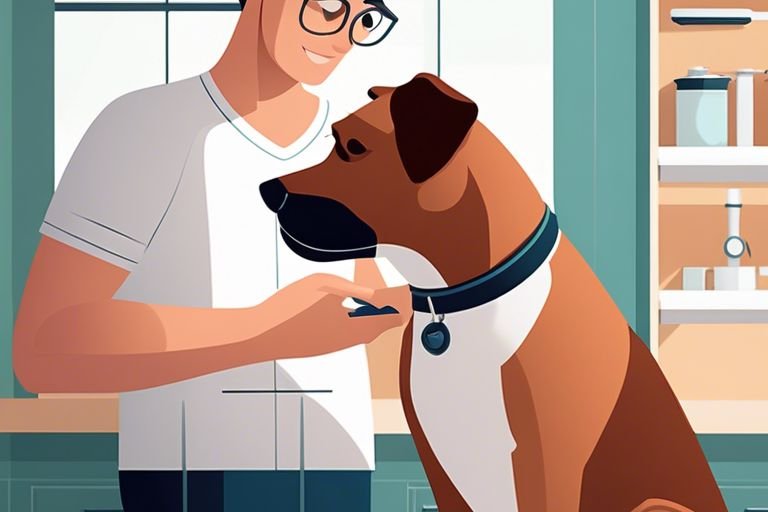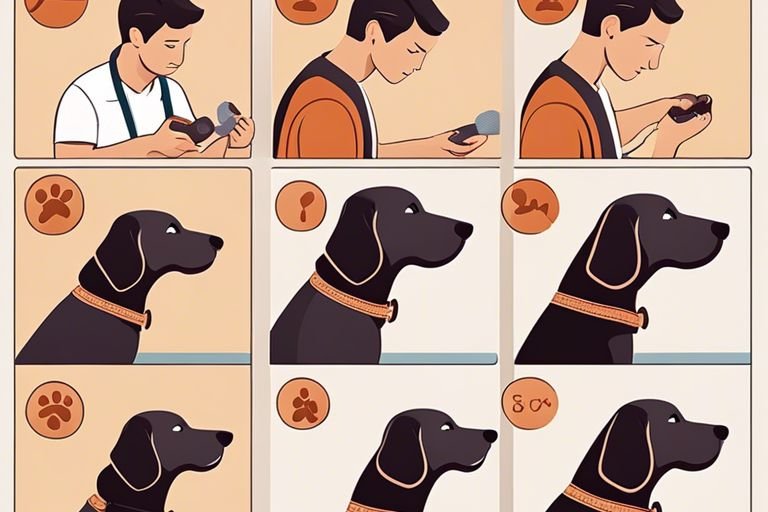Cyriological grooming can be an essential part of your pet’s regular care routine. While brushing and bathing, it’s crucial to be vigilant for any unusual lumps or bumps that may appear on your furry friend’s skin. Early detection is key to addressing any potential health issues, so it’s important to know what to look for. When grooming your pet, take the time to carefully inspect their skin and coat for any strange masses, sores, or growths. It’s also important to pay attention to any changes in your pet’s behavior or mood, as this can also be an indication of an underlying health issue. Remember, regular grooming doesn’t just keep your pet looking and feeling good—it can also help you keep them healthy.
Key Takeaways:
- Regularly Check Your Pet: Make it a habit to carefully inspect your pet’s skin and fur for any lumps or bumps.
- Pay Attention to Changes: Be aware of any changes in the size, shape, or texture of any lumps or bumps on your pet’s body.
- Consult a Professional: If you notice any concerning lumps or bumps, seek the advice of a veterinarian for further evaluation and treatment.
- Use Proper Lighting and Tools: Proper lighting and grooming tools such as brushes and combs can help you identify lumps and bumps more effectively.
- Be Proactive in Prevention: Taking preventive measures such as proper grooming, maintaining a healthy diet, and regular veterinary check-ups can help identify and address any lumps or bumps early on.

How-To Identify Lumps and Bumps
Some lumps and bumps can be easily noticeable during grooming, while others may require a more thorough inspection. It is essential for pet owners and groomers to understand the importance of identifying these anomalies and taking appropriate action.
Tips for a Systematic Grooming Approach
Bumps and lumps should be systematically checked, starting from the head and moving down to the tail. Use your hands to gently feel for any irregularities or abnormalities. Observe the skin for any discoloration, swelling, or unusual textures. Record any unusual findings for future reference. Any suspicion of a lump or bump should be brought to the attention of a veterinarian.
Factors Affecting Lump and Bump Identification
Bumps and lumps can be affected by various factors, including age, breed, and overall health of the pet. The location of the lump or bump can also impact its visibility and identification. This makes it crucial for groomers and pet owners to understand these factors to effectively identify and address any abnormalities.
This systematic approach can help identify and address any abnormalities with precision, potentially preventing more serious health issues in the future.
Common Types of Lumps and Bumps
Obviously, when grooming your dog, it’s important to be on the lookout for any lumps, bumps, or skin abnormalities that may arise. Here are the most common types that you may come across:
| Cysts and Abscesses | Warts and Skin Tags |
| Lipomas and Tumors |
Cysts and Abscesses
On occasion, you may come across cysts or abscesses while grooming your dog. These are often caused by blocked oil glands or hair follicles, leading to the formation of a fluid-filled sac under the skin. If you notice any unusual swelling or discharge, it’s important to address it promptly to prevent any further complications.
Warts and Skin Tags
Tags that resemble small, skin-colored growths are often harmless warts or skin tags. While these are typically benign, it’s essential to monitor them for any changes in size, shape, or color. If you notice any abnormalities, consult with your veterinarian to rule out any potential concerns.
Abscesses, warts, and skin tags are typically harmless, but it’s crucial to monitor them closely for any changes or irregularities that may signal a more serious issue.
Lipomas and Tumors
One of the more concerning types of lumps you may encounter are lipomas and tumors. Lipomas are typically soft, fatty tumors that are usually benign, while tumors can vary in their severity. If you notice any new or abnormal growths on your dog, it’s essential to have them examined by a veterinarian to determine the appropriate course of action.
For instance, if you notice a rapidly growing or changing lump, it’s important to seek veterinary attention promptly to rule out any potential health risks for your furry friend.
When to Consult a Veterinarian
Keep a close eye on any lumps or bumps that you notice on your pet during grooming. While many lumps are harmless and may be nothing to worry about, there are instances where it is essential to consult a veterinarian for further evaluation. It’s important to know when to seek professional help to ensure the health and well-being of your furry friend.
Signs of Urgency
Consult a veterinarian immediately if you notice any of the following signs of urgency: sudden changes in the size or shape of a lump, redness, swelling, or discharge around the lump, or if your pet seems to be in pain or discomfort. These could be signs of a more serious issue that requires prompt medical attention.
Preparing for the Veterinary Visit
For peace of mind and to ensure the best possible care for your pet, it’s important to be prepared for the veterinary visit. Gather any relevant information about the lump or bump, including when you first noticed it, any changes you’ve observed, and any other symptoms your pet may be experiencing. This will help the veterinarian make a more accurate diagnosis and provide the necessary treatment.
Signs of urgency such as sudden changes in the size or shape of a lump, redness, swelling, or discharge, should be taken seriously and addressed promptly by a veterinarian. It’s always better to be safe and have any concerning lumps or bumps evaluated by a professional to rule out any serious conditions.
Prevention and Vigilance
For pet owners, prevention and vigilance are key when it comes to identifying lumps and bumps during grooming. By taking proactive measures and staying alert, you can catch any abnormalities early and seek prompt veterinary care.
Tips for Prevention Through Care
The best way to prevent lumps and bumps on your pet is through regular grooming and examination. Keep your pet’s coat clean and well-maintained, and pay close attention to any changes in the skin or underlying tissues. Make sure to monitor your pet’s weight and body condition, as obesity can lead to various health issues, including lumps. In addition, be mindful of any environmental factors that may contribute to skin irritation or lumps, such as allergens and parasites.
Keeping a Record for Future Reference
Future reference is crucial when it comes to monitoring your pet’s health. Keep a detailed record of any lumps or bumps you find during grooming, noting their size, location, and any changes over time. This will help your veterinarian assess the situation more accurately and determine the best course of action. It can also provide valuable information for any future lumps or bumps that may appear, allowing for comparison and analysis of their development.
Keeping a record of your pet’s lumps and bumps can also help you detect any patterns or trends that may indicate underlying health issues. By actively maintaining this record, you are taking a proactive approach to your pet’s well-being and ensuring that any potential concerns are addressed in a timely manner.

Summing up: Identifying Lumps and Bumps During Grooming
It is essential for pet owners to be vigilant when grooming their pets and to be able to identify any lumps or bumps that may appear on their skin. By performing regular thorough examinations, feeling for any irregularities and paying attention to any changes in the skin’s texture or appearance, pet owners can help identify potential health issues early on. If any unfamiliar lumps or bumps are found, it is crucial to seek veterinary care promptly. Early detection and treatment of any skin abnormalities can significantly improve the outcome for pets and enhance their quality of life.
FAQ
Q: What are common lumps and bumps that can be found during grooming?
A: Common lumps and bumps that can be found during grooming include skin tags, fatty tumors, cysts, and abscesses. These can vary in size, texture, and appearance.
Q: How can I identify potentially harmful lumps and bumps on my pet?
A: Potentially harmful lumps and bumps may be irregularly shaped, causing discomfort or pain to your pet, or showing signs of rapid growth. It’s important to monitor any changes in size, texture, or appearance, and consult a veterinarian if you have any concerns.
Q: What should I do if I find a suspicious lump or bump during grooming?
A: If you find a suspicious lump or bump on your pet, it’s essential to schedule a veterinarian’s appointment for a thorough examination. Your veterinarian can perform tests such as fine needle aspirates or biopsies to determine if the lump is benign or requires treatment.
